 by our College Data Analytics Team
by our College Data Analytics TeamHere, you'll find out more about the major, including such details as the number of graduates, what degree levels are offered, ethnicity of students, average salaries, and more. Also, learn how U-M ranks among other schools offering degrees in bio engineering.
Go directly to any of the following sections:
U-M was ranked #18 on College Factual's most recent list of the best schools for bio engineering majors. This puts the bachelor's program at the school solidly in the top 15% of all colleges and universities in the country. It is also ranked #1 in Michigan.
During the 2021-2022 academic year, University of Michigan - Ann Arbor handed out 103 bachelor's degrees in biomedical engineering. This is a decrease of 15% over the previous year when 121 degrees were handed out.
In 2022, 108 students received their master’s degree in bio engineering from U-M. This makes it the #3 most popular school for bio engineering master’s degree candidates in the country.
In addition, 15 students received their doctoral degrees in bio engineering in 2022, making the school the #27 most popular school in the United States for this category of students.
The median salary of bio engineering students who receive their bachelor's degree at U-M is $70,307. This is higher than $64,853, which is the national median for all bio engineering bachelor's degree recipients.
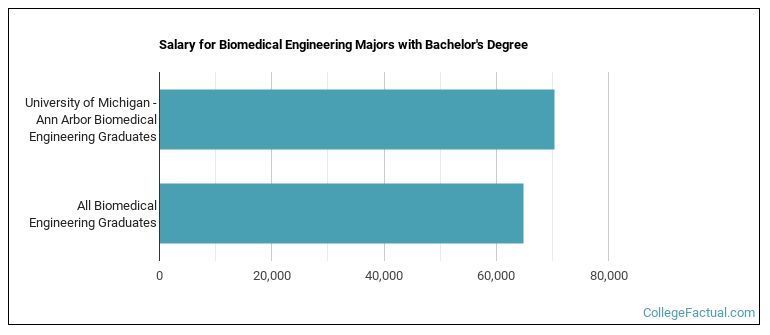
While getting their bachelor's degree at U-M, bio engineering students borrow a median amount of $58,157 in student loans. This is higher than the the typical median of $47,261 for all bio engineering majors across the country.
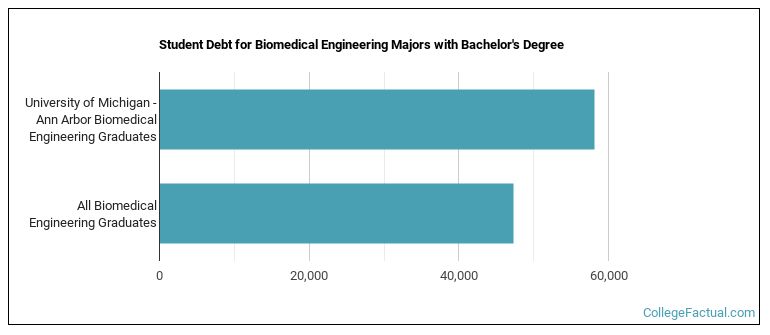
In 2022-2023, the average part-time undergraduate tuition at U-M was $2,458 per credit hour for out-of-state students. The average for in-state students was $716 per credit hour. The average full-time tuition and fees for undergraduates are shown in the table below.
| In State | Out of State | |
|---|---|---|
| Tuition | $17,977 | $59,775 |
| Fees | $332 | $332 |
| Books and Supplies | $1,126 | $1,126 |
| On Campus Room and Board | $13,856 | $13,856 |
| On Campus Other Expenses | $2,572 | $2,572 |
Learn more about U-M tuition and fees.
For the most recent academic year available, 44% of bio engineering bachelor's degrees went to men and 56% went to women.

The majority of the students with this major are white. About 61% of 2022 graduates were in this category.
The following table and chart show the ethnic background for students who recently graduated from University of Michigan - Ann Arbor with a bachelor's in bio engineering.
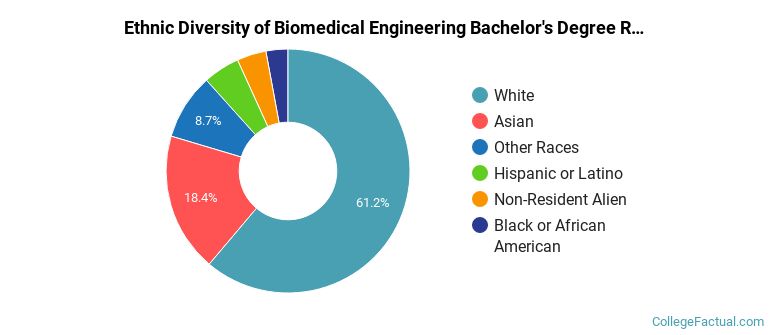
| Ethnic Background | Number of Students |
|---|---|
| Asian | 19 |
| Black or African American | 3 |
| Hispanic or Latino | 5 |
| White | 63 |
| Non-Resident Aliens | 4 |
| Other Races | 9 |
U-M does not offer an online option for its bio engineering bachelor’s degree program at this time. To see if the school offers distance learning options in other areas, visit the U-M Online Learning page.
Bio Engineering majors graduating with a master's degree from U-M make a median salary of $83,110 a year. This is a better than average outcome since the median salary for all bio engineering graduates with a master's is $82,315.

Of the 90 bio engineering students who graduated with a master's degree in 2021-2022 from U-M, about 43% were men and 57% were women.
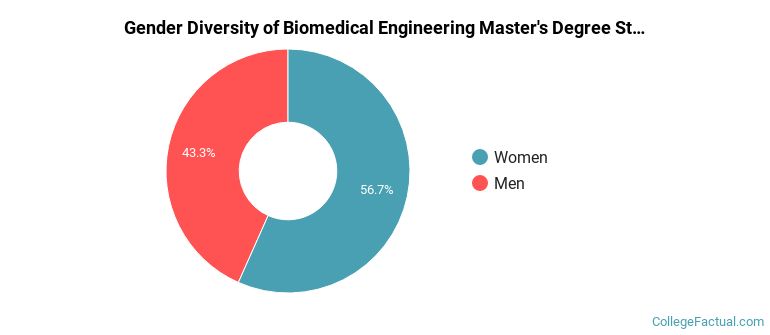
The majority of the students with this major are white. About 59% of 2022 graduates were in this category.
The following table and chart show the ethnic background for students who recently graduated from University of Michigan - Ann Arbor with a master's in bio engineering.
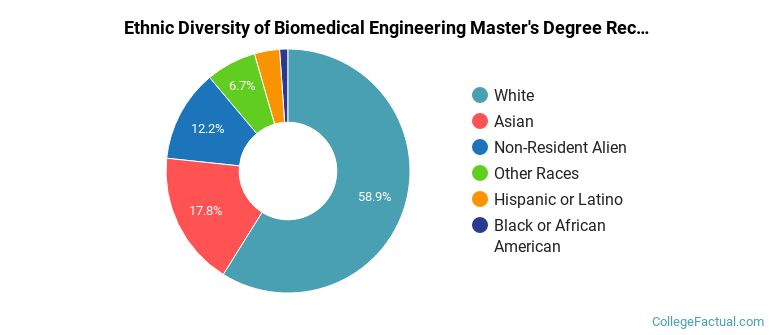
| Ethnic Background | Number of Students |
|---|---|
| Asian | 16 |
| Black or African American | 1 |
| Hispanic or Latino | 3 |
| White | 53 |
| Non-Resident Aliens | 11 |
| Other Races | 6 |
Take a look at the following statistics related to the make-up of the bio engineering majors at University of Michigan - Ann Arbor.
| Related Major | Annual Graduates |
|---|---|
| Mechanical Engineering | 461 |
| Aerospace & Aeronautical Engineering | 294 |
| Electrical and Computer Engineering. | 279 |
| Computer Engineering | 261 |
| Industrial Engineering | 247 |
More about our data sources and methodologies.